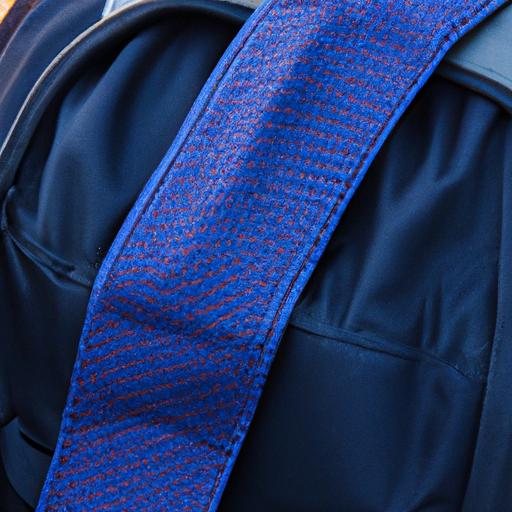How To Relieve Shoulder Pain From Backpack
Do you often experience shoulder pain from carrying a backpack? If so, you’re not alone! In this article, we will explore effective methods to help alleviate that annoying discomfort. Discover simple adjustments to your backpack, practical exercises, and useful tips to provide relief for your shoulders. Say goodbye to that nagging ache and embrace a more comfortable backpacking experience.
Understanding Shoulder Pain from Backpacks
Shoulder pain from backpacks is a common issue that many people face, especially students and hikers who carry heavy loads on their backs. While backpacks are convenient for carrying our belongings, they can also cause discomfort and even injury if not used properly. Understanding the causes of shoulder pain from backpacks, the impact it can have on daily activities, and the preventive measures that can be taken is essential for maintaining shoulder health.
Causes of Shoulder Pain from Backpacks
Shoulder pain from backpacks can stem from various causes. One of the primary factors is the weight and size of the backpack. Carrying a heavy backpack that exceeds your body’s capacity can strain the shoulder muscles and lead to pain. Another cause is the lack of proper support and padding in the backpack. When the backpack is not designed ergonomically, it fails to distribute the weight evenly, placing excessive pressure on the shoulders. Additionally, improper packing technique, such as unevenly distributing weight or placing heavy items away from the body, can contribute to shoulder pain.
Impact of Shoulder Pain on Daily Activities
Shoulder pain can significantly impact daily activities, making even simple tasks more challenging or even impossible to perform. The constant discomfort and restricted range of motion can hinder your ability to perform basic movements like lifting, reaching, or carrying objects. Shoulder pain can even affect your sleep, as lying on the affected shoulder may be painful. Moreover, the emotional toll of chronic shoulder pain can lead to feelings of frustration, stress, and a decrease in overall quality of life. It is crucial to address shoulder pain promptly to prevent it from interfering with your daily activities.
Preventive Measures for Shoulder Pain
While shoulder pain from backpacks can be bothersome, there are several preventive measures you can take to minimize discomfort and maintain shoulder health. One of the most important steps is selecting the right backpack. consider the weight and size of the backpack, opting for one that suits your needs without exceeding your carrying capacity. Look for a backpack with adjustable straps to ensure a proper fit and distribute weight evenly. It is also advisable to choose a backpack with chest and waist straps, as they provide additional support and help stabilize the load. Finally, check that the backpack has adequate padding to reduce pressure points on the shoulders.
Proper Backpack Selection
Proper backpack selection is crucial to prevent shoulder pain and ensure comfort during use. First and foremost, consider the weight and size of the backpack in relation to your physical capabilities. Avoid selecting a backpack that will exceed your body’s carrying capacity. Opt for a backpack with adjustable straps, as they allow you to customize the fit to your body. Adjustable straps ensure that the weight is evenly distributed and reduce strain on the shoulders. Additionally, choose a backpack that has chest and waist straps. These straps not only help keep the backpack stable but also transfer some of the weight to the hips, alleviating pressure from the shoulders. Finally, pay attention to the padding in the backpack. A backpack with proper padding will offer enhanced comfort and prevent the straps from digging into your shoulders.
Proper Packing Technique
Proper packing technique plays a significant role in preventing shoulder pain. When organizing your belongings in the backpack, aim to distribute the weight evenly across the entire pack. Pack heavy items closer to your back, as this helps maintain balance and reduces strain on the shoulders. Utilize compartments and pockets effectively to ensure that items are secure and well-distributed. Separate sharp or bulky items from sensitive items to avoid discomfort or damage. Moreover, strive for symmetry when packing. Balancing the load evenly on both sides of the backpack can help maintain stability and minimize strain on one shoulder.
Adjusting the Backpack
When wearing a backpack, proper adjustment is key to ensuring comfort and reducing shoulder strain. Begin by adjusting the shoulder straps snugly. The straps should be securely tightened to prevent the backpack from hanging too low or pulling on the shoulders. Avoid over-tightening, as this may restrict your range of motion and cause discomfort. Position the backpack correctly on your back, ensuring that it rests squarely in the middle and does not sag. Adjust the chest and waist straps to distribute the weight evenly. These straps help stabilize the backpack and prevent it from swaying or pulling on the shoulders. It is important to check the straps regularly and make adjustments as needed to maintain proper fit throughout the day.
Practicing Good Posture
Maintaining good posture is not only beneficial for your overall health but also essential for preventing shoulder pain from backpacks. When wearing a backpack, strive to maintain an upright posture. Imagine a string pulling your head towards the ceiling, aligning your spine and keeping your shoulders relaxed. Engaging your core muscles can provide additional support for your shoulders and back. Avoid slouching or arching your back, as these postures can lead to added strain on the shoulder muscles. Finally, align the backpack with your spine, ensuring that it sits comfortably and does not cause any awkward positions or imbalances.
Strengthening Shoulder Muscles
strong shoulder muscles are better equipped to handle the demands of carrying a backpack. Incorporating shoulder exercises into your routine can help strengthen the muscles and improve their endurance. Focus on exercises that target the rotator cuff muscles, as these muscles play a crucial role in shoulder stability and mobility. Resistance band exercises can be particularly effective in providing resistance throughout the range of motion. However, it is important to consult with a physical therapist or fitness professional to receive personalized exercises that address your specific needs and ensure proper form.
Stretching and Mobility Exercises
In addition to strengthening exercises, stretching and mobility exercises are essential for maintaining shoulder health and preventing pain. Shoulder rolls and shrugs can help alleviate tension and improve mobility in the shoulder joint. Stretching the chest, neck, and upper back muscles can also relieve tightness and improve flexibility. Wall stretches, where you position your forearm on a wall and gently stretch the shoulder muscles, are especially useful. Pendulum exercises, where you lean forward and gently swing your arm in a circular motion, can promote mobility and reduce stiffness in the shoulder joint. Incorporating these exercises into your routine can help keep your shoulders flexible and reduce the risk of pain from backpack use.
Heat and Cold Therapy
Heat and cold therapy can be effective in alleviating shoulder pain caused by backpack use. Applying heat to the affected area helps relax tense muscles and improve blood circulation. You can use a heating pad or take a warm shower to provide gentle heat therapy. Cold therapy, on the other hand, is useful for reducing inflammation and numbing the area, providing temporary pain relief. Applying an ice pack wrapped in a cloth for 15 to 20 minutes at a time can help decrease swelling and discomfort. Alternating between hot and cold packs can provide additional relief by improving blood flow and reducing inflammation.
Pain Relief Techniques
If shoulder pain persists, various pain relief techniques can be utilized. Over-the-counter pain relievers, such as acetaminophen or ibuprofen, can provide temporary relief from discomfort and inflammation. Topical analgesics or creams specifically formulated for pain relief can also be applied directly to the affected area. Alternative therapies like acupuncture or massage may be beneficial for chronic shoulder pain. These therapies help release tension, improve circulation, and promote relaxation. If shoulder pain persists or worsens despite these measures, it is advisable to consult with a healthcare professional for a proper diagnosis and treatment options.
Taking Breaks and Resting
Taking regular breaks and allowing sufficient rest is crucial for preventing shoulder strain and promoting recovery. During long periods of carrying a backpack, it is important to take brief breaks to relieve pressure on the shoulders. Remove the backpack and allow your shoulders to rest and recover. Take the opportunity to stretch your shoulders and perform relaxation techniques to reduce tension. Practicing deep breathing exercises or meditation can help reduce stress and relax the shoulder muscles. Additionally, ensure that you are getting sufficient sleep and rest. A good night’s sleep is essential for the body to repair and recover, including the muscles in the shoulders. Prioritizing breaks and rest can contribute to maintaining shoulder health and preventing pain from backpack use.
In conclusion, understanding the causes of shoulder pain from backpacks, the impact it can have on daily activities, and the preventive measures that can be taken is crucial for maintaining shoulder health. Proper backpack selection, employing proper packing techniques, adjusting the backpack correctly, practicing good posture, strengthening shoulder muscles, performing stretching and mobility exercises, utilizing heat and cold therapy, employing pain relief techniques, and taking breaks and resting all contribute to alleviating and preventing shoulder pain. By adopting these strategies, you can ensure that your shoulders remain healthy and free from pain while carrying your backpack.




